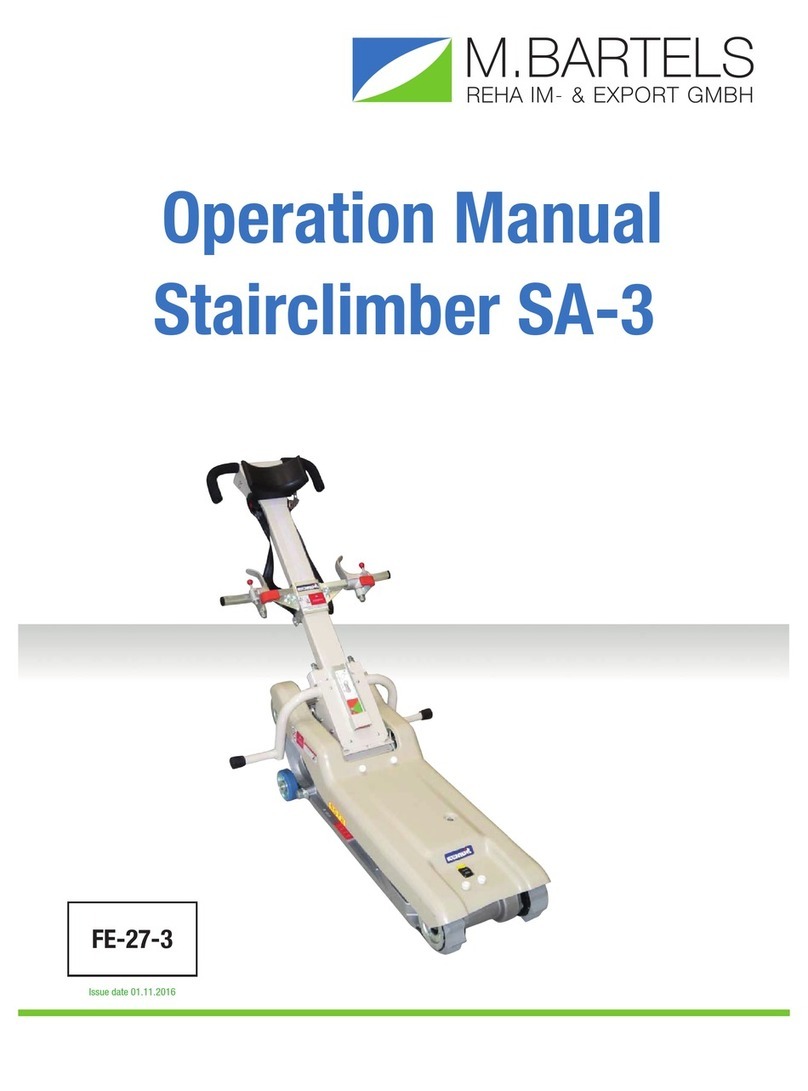
5
2 Handling of Battery
• Battery is a sealed type. It is unnecessary to refill
it with water. Never dismantle Battery.
•Never position Battery near flame or short-circuit
Battery.
•If Battery is cracked and its electrolytic solution
contacts skin or clothes, immediately rinse the
contaminated area with plenty of water
•If electrolytic solution splashes into the eye, rinse
the eye with plenty of clean water and consult an
ophthalmologist.
•Use special Battery Charger for charging Battery.
3 Safe operation with proper knowledge
• The operator needs sufficient training. Be sure
the training is undertaken before the operator
runs this machine for the first time.
•Proper clothes, suitable to machine control, must
be worn.
•The machine can be run only after Wheelchair
is safely secured by Forks, Seat Belt and other
necessary items.
•No operator overworked, sick, taking medicine,
intoxicated, or otherwise inhibited may operate
STAIRMATE.
4 Operation on a staircase
• Never run the machine on a staircase angle
exceeding 35 degrees,on a curved staircase, an
oily staircase, an icy staircase, a wet or slippery
staircase or any other inappropriate staircase.
•Obliquely ascending or descending the stairswill
result in danger of serious accidentThe operator
must avoid oblique operation on stairs.Always
approach the staircase squarely.
•Whenever running the machine upward, the
operator must always pay attention to the area
behind him/herself. Do not run STAIRMATE if
the stairs is crowded. Whenever running the
machine downward,the operator must always pay
attention to the front of the machine. Do not run
STAIRMATE if the stairs is crowded.
•Never let go of the machine unless unavoidable
circumstances separate the operator from the
machine.
5 Stopping machine
• If the machine gives trouble, malfunctions or
is damaged, immediately stop operating the
machine. Running it with a problem existing can
result in a serious accident.
5
5




























